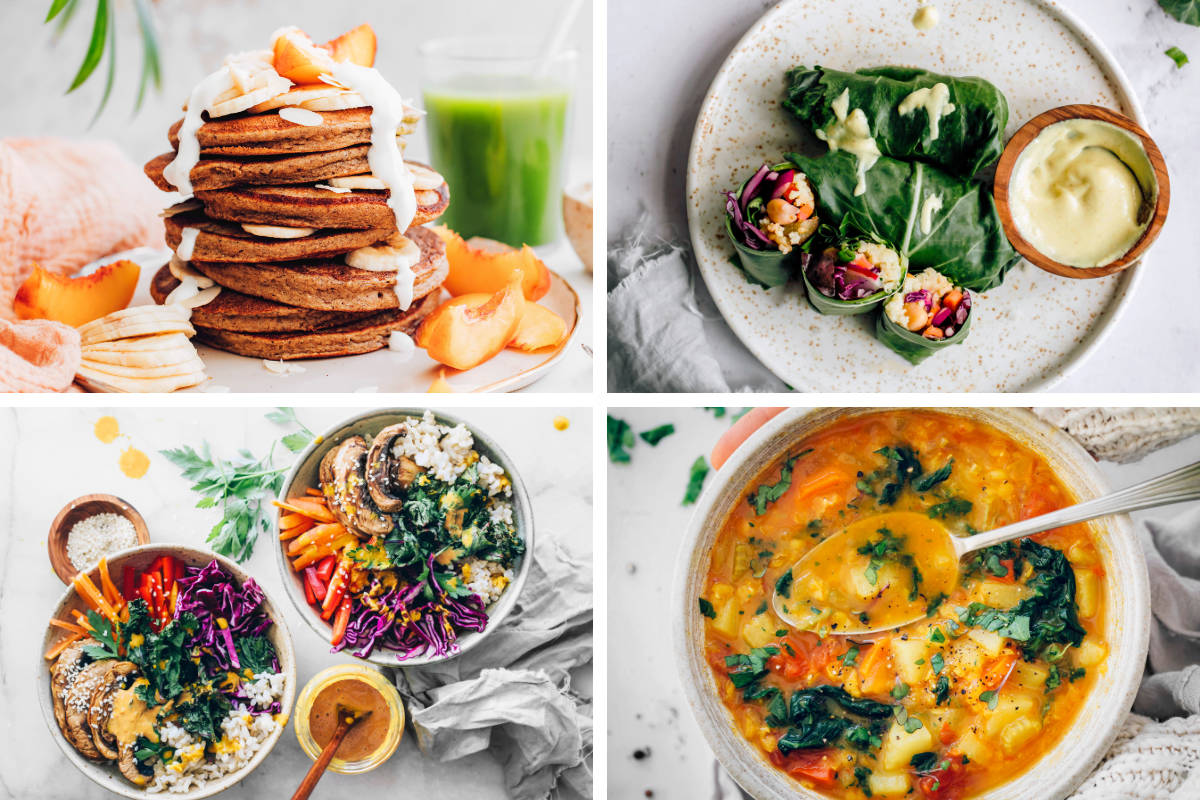Navigating the world of allergies can feel like a culinary tightrope walk, especially when budget constraints are added to the equation. This guide offers a lifeline, demonstrating that delicious, allergy-friendly meals don’t require a gourmet chef’s salary or a specialized grocery store. We’ll explore clever pantry staples, simple recipes that are easy on the wallet and even easier to make, and strategies for stretching your grocery budget without sacrificing flavor or nutritional value. Prepare to discover a world of vibrant, allergy-conscious dishes that are both satisfying and surprisingly affordable.
From transforming everyday recipes into allergy-friendly masterpieces to mastering the art of budget-friendly meal planning, this comprehensive guide equips you with the knowledge and tools to create a diverse range of meals tailored to your specific needs. Imagine a pantry brimming with affordable, versatile ingredients, ready to be transformed into mouthwatering creations that the whole family can enjoy. We’ll delve into practical tips and techniques, ensuring that delicious, allergy-conscious eating becomes a seamless and enjoyable part of your daily life, regardless of your budget.
Simple Allergy-Friendly Recipe Ideas
Creating delicious and affordable meals that cater to various allergies can seem daunting, but with a few simple substitutions and adaptable recipes, it’s entirely achievable. These recipes are designed to be beginner-friendly, using readily available ingredients and straightforward methods. They are naturally gluten-free, dairy-free, and nut-free, making them suitable for many dietary restrictions. Remember to always check ingredient labels to ensure they align with your specific needs.
Simple Allergy-Friendly Recipes
These three recipes offer a variety of flavors and textures, showcasing how easy it is to create satisfying meals without common allergens. Each recipe includes step-by-step instructions and suggestions for substitutions.
- One-Pan Lemon Herb Roasted Chicken and Vegetables: This vibrant dish is packed with flavor and requires minimal cleanup. The bright lemon juice adds a zesty kick, while the herbs provide a fragrant aroma. The recipe is naturally gluten-free, dairy-free, and nut-free.
- Sweet Potato and Black Bean Chili: This hearty and flavorful chili is perfect for a cozy night in. The sweet potatoes add a touch of sweetness, while the black beans provide protein and fiber. This recipe is easily adaptable to various spice levels and is naturally gluten-free, dairy-free, and nut-free.
- Simple Quinoa Salad with Roasted Vegetables: This refreshing salad is a great option for a light lunch or side dish. The quinoa provides a good source of protein and fiber, while the roasted vegetables add a burst of flavor and color. This recipe is naturally gluten-free, dairy-free, and nut-free.
Step-by-Step Instructions and Substitutions
Below are detailed instructions and substitution suggestions for each recipe. Remember that careful ingredient selection is key to ensuring your meals remain allergy-friendly.
- One-Pan Lemon Herb Roasted Chicken and Vegetables:
- Ingredients: 1 whole chicken (about 3-4 lbs), 1 lemon (sliced), 2 tbsp olive oil, 1 tbsp dried herbs (Italian mix, oregano, or thyme), 1 lb assorted vegetables (potatoes, carrots, broccoli, etc.), salt and pepper to taste.
- Instructions: Preheat oven to 400°F (200°C). Place vegetables in a large roasting pan. Rub chicken with olive oil, herbs, salt, and pepper. Place lemon slices inside the chicken cavity. Place chicken on top of vegetables. Roast for 1-1.5 hours, or until chicken is cooked through and vegetables are tender.
- Substitutions: For a spicier dish, add a pinch of red pepper flakes. Substitute any vegetables you prefer. Use ghee or coconut oil instead of olive oil if needed for specific dietary needs.
- Sweet Potato and Black Bean Chili:
- Ingredients: 2 large sweet potatoes (diced), 1 onion (chopped), 2 cloves garlic (minced), 1 tbsp chili powder, 1 tsp cumin, 1/2 tsp smoked paprika, 1 (15-ounce) can black beans (rinsed and drained), 1 (28-ounce) can crushed tomatoes, 4 cups vegetable broth, salt and pepper to taste.
- Instructions: Sauté onion and garlic in a large pot. Add sweet potatoes, chili powder, cumin, and smoked paprika. Cook for 5 minutes. Stir in black beans, crushed tomatoes, and vegetable broth. Bring to a boil, then reduce heat and simmer for 30 minutes, or until sweet potatoes are tender. Season with salt and pepper to taste.
- Substitutions: For a spicier chili, add more chili powder or a few dashes of your favorite hot sauce. Kidney beans or pinto beans can be substituted for black beans. Coconut milk can be added for creaminess.
- Simple Quinoa Salad with Roasted Vegetables:
- Ingredients: 1 cup quinoa (rinsed), 2 cups vegetable broth, 1 cup assorted roasted vegetables (bell peppers, zucchini, eggplant, etc.), 1/4 cup chopped fresh herbs (parsley, cilantro, or dill), 2 tbsp olive oil, salt and pepper to taste.
- Instructions: Cook quinoa according to package directions, using vegetable broth instead of water. Roast vegetables until tender. Combine cooked quinoa, roasted vegetables, and herbs in a large bowl. Drizzle with olive oil and season with salt and pepper.
- Substitutions: Add other roasted vegetables like broccoli or carrots. Use different herbs based on your preference. Lemon juice can be added for extra flavor.
Adapting Existing Recipes to Be Allergy-Friendly
Let’s take a classic pasta recipe as an example. A traditional creamy tomato pasta often includes wheat pasta, dairy cream, and potentially nuts in the pesto. To make it allergy-friendly, substitute gluten-free pasta (brown rice, quinoa, or lentil pasta work well), replace the cream with coconut milk or full-fat coconut cream, and omit the pesto altogether or use a sun-dried tomato and olive oil based sauce. This simple swap results in a delicious and allergy-safe meal. Always carefully review all ingredients before making any substitutions.
Meal Planning for Allergy-Friendly Diets on a Budget

Careful meal planning is crucial for managing allergies while sticking to a budget. Creating a weekly plan allows for efficient shopping, minimizes waste, and prevents impulsive, expensive purchases of allergy-unfriendly foods. This strategy ensures you always have delicious, safe meals ready without overspending.
Sample Weekly Allergy-Friendly Meal Plan (Under $10 per Dinner)
This sample plan assumes a family of four and avoids common allergens like dairy, gluten, and nuts. Prices are estimates and may vary depending on location and sales.
| Day | Meal | Ingredients | Cost (Estimate) |
|---|---|---|---|
| Monday | One-Pan Lemon Herb Roasted Chicken and Vegetables | 1 whole chicken (approx. $8), 1 lemon ($0.50), 1 tbsp dried herbs ($1), potatoes ($2), carrots ($1), broccoli ($2) | $14.50 |
| Tuesday | Lentil Soup with Coconut Milk | 1 cup red lentils ($1), 1 can coconut milk ($2), 1 onion ($0.50), 2 carrots ($1), vegetable broth ($1), spices ($0.50) | $6.00 |
| Wednesday | Salmon with Roasted Sweet Potatoes and Green Beans | 4 salmon fillets ($10), 2 sweet potatoes ($2), 1 lb green beans ($2) | $14.00 |
| Thursday | Chicken and Rice Stir-Fry with Soy Sauce (Gluten-Free) | Cooked chicken from Monday ($4), 1 cup rice ($1), assorted vegetables (peppers, onions, broccoli – $4), gluten-free soy sauce ($3) | $12.00 |
| Friday | Black Bean Burgers on Gluten-Free Buns | 1 can black beans ($1.50), gluten-free breadcrumbs ($3), onion ($0.50), spices ($0.50), 4 gluten-free buns ($4) | $9.50 |
Organizing Grocery Shopping for Allergy-Friendly Meals
Effective organization is key to minimizing waste and maximizing budget efficiency. Before shopping, create a detailed shopping list based on your weekly meal plan. Categorize items by grocery store aisle to streamline your shopping trip. Check your pantry and refrigerator for existing ingredients to avoid duplicate purchases. Prioritize buying in bulk for non-perishable items, but be mindful of expiration dates. Consider using a meal planning app or creating a visual shopping list with pictures for better organization. For example, a visually organized list could show images of the specific brands of gluten-free bread you need next to the number of loaves. This method can help you avoid impulse buys and stick to your budget.
Stretching Ingredients for Multiple Meals
Strategic ingredient selection and repurposing are essential for maximizing value. For instance, the roasted chicken from Monday’s meal can be used in Thursday’s stir-fry, reducing the overall cost of ingredients. Similarly, leftover cooked lentils from Tuesday’s soup can be incorporated into salads or added to other dishes throughout the week. Large batches of rice or quinoa can serve as a base for multiple meals. Consider buying larger cuts of meat and portioning them out for individual meals to freeze for later use. This method allows you to prepare multiple meals with minimal additional effort. A large batch of rice could serve as a base for Thursday’s stir-fry and be used in another meal on the weekend, cutting down on individual cooking times.
Adapting Popular Recipes to Be Allergy-Friendly
Adapting beloved recipes to accommodate various allergies requires careful substitution and a deep understanding of ingredient functions. This process ensures that those with dietary restrictions can still enjoy familiar flavors and textures without compromising their health. The key lies in replacing allergenic ingredients with suitable alternatives that mimic their properties, creating delicious and safe meals.
Converting a Popular Recipe: Chocolate Chip Cookies
Many classic chocolate chip cookie recipes rely on common allergens like dairy and gluten. The following steps demonstrate how to convert a standard recipe into a delicious dairy-free and gluten-free version.
- Replacing Butter: Traditional recipes use butter for flavor, richness, and texture. Substitute with an equal amount of vegan butter, coconut oil, or a blend of both. Coconut oil will impart a subtle coconut flavor, while vegan butter provides a closer approximation to the original taste and texture. The choice depends on personal preference and desired outcome.
- Swapping Flour: All-purpose flour, a common allergen for those with celiac disease or gluten sensitivity, is usually the base of cookie dough. Replace it with a gluten-free blend specifically designed for baking. These blends often contain a combination of flours like almond flour, rice flour, tapioca starch, and xanthan gum. Xanthan gum is crucial for providing the necessary binding and texture similar to gluten.
- Dairy-Free Chocolate Chips: Many chocolate chips contain dairy products in the form of milk solids. Opt for dairy-free chocolate chips, readily available in most supermarkets, to maintain the iconic chocolate chip element of the cookies. These chips are often made with plant-based alternatives like soy milk or coconut milk.
- Adjusting Sweetness: Gluten-free flours can sometimes absorb less liquid, potentially affecting the sweetness and overall texture. You may need to slightly adjust the amount of sugar in the recipe to compensate. Start with the original amount and add a tablespoon at a time until the desired sweetness and consistency are achieved.
- Baking Time and Temperature: Gluten-free cookies tend to bake faster and may brown more quickly. Monitor them carefully and reduce baking time if necessary to prevent burning. A slight decrease in oven temperature might also be beneficial.
Adapting Common Recipe Types
The principles of substitution apply across various recipe types.
Pasta Dishes: Traditional pasta often contains gluten. Substituting gluten-free pasta, made from rice, quinoa, or corn, is straightforward. Creamy sauces can be made dairy-free using plant-based milks (almond, soy, oat) and cashew cream. Cheese can be replaced with nutritional yeast for a cheesy flavor.
Baked Goods: As demonstrated with the chocolate chip cookies, substituting flours, dairy, and eggs is key to creating allergy-friendly baked goods. Applesauce, mashed bananas, or flax eggs (flaxseed meal mixed with water) can replace eggs, binding ingredients and adding moisture. Dairy-free milks and vegan butter are suitable replacements for dairy products.
Soups: Many soups rely on dairy or gluten-containing thickeners. Replace dairy-based cream with coconut milk or cashew cream for a rich and creamy texture. Instead of using flour as a thickener, consider using pureed vegetables or cornstarch for a gluten-free alternative.
Nutritional Comparison: Original vs. Allergy-Friendly Chocolate Chip Cookies
A direct nutritional comparison requires specific recipes. However, a general comparison can be made. The allergy-friendly version will likely have a different macronutrient profile. For instance, it may have a higher fat content if coconut oil is used, and a lower protein content if dairy is removed. The fiber content might increase if gluten-free flours containing more fiber are used. The glycemic index might also vary depending on the type of sugar and flour used. It’s essential to use a nutritional calculator to compare the specific nutritional information of both the original and adapted recipes for an accurate analysis.
Embarking on an allergy-friendly culinary journey doesn’t have to mean compromising taste or emptying your wallet. This guide has equipped you with the essential tools – from budget-savvy pantry staples and simple, adaptable recipes to efficient meal planning strategies and savvy label reading techniques. Remember, creating delicious, allergy-friendly meals is entirely achievable, even on a tight budget. With a little planning and creativity, you can confidently navigate the world of dietary restrictions while savoring flavorful, affordable meals that nourish your body and delight your taste buds. So, embrace the challenge, experiment with new flavors, and enjoy the rewarding experience of creating healthy and delicious food for yourself and your loved ones.
Q&A
What are some common hidden allergens I should watch out for?
Hidden allergens often lurk in processed foods. Look out for things like hydrolyzed vegetable protein (often contains soy), malt flavoring (barley), and spices that may be processed in facilities that also handle allergens.
How can I adapt baking recipes to be allergy-free?
Many gluten-free flours are available, and you can often substitute dairy with plant-based milks and yogurt. Experiment with different binders to achieve the desired texture.
Are all “gluten-free” products automatically allergy-friendly?
No, gluten-free doesn’t necessarily mean free of other allergens like dairy, nuts, or soy. Always carefully check ingredient labels.
What if I have multiple allergies?
Carefully read labels and ingredient lists. Prioritize eliminating the most severe allergens first and build from there, always double-checking for cross-contamination possibilities.


